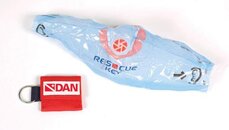Bubbletrubble
Contributor
I don't understand how risk can be evaluated without any proven risk factors.Bubbletrubble, I'm aware that relationships do not prove causality, so NO risk factors have been PROVEN to be associated with IPE. That would be true of any research where there is no control group and variables that are manipulated - a lot of research that is still valid in showing relationships.
Just because risk factors are not *proven* does not mean we should disregard them. The associations are still helpful in evaluating our risk and how we may be able to mitigate the risk. It certainly doesn't hurt.
I'm happy to concede that associations/correlations may be suggestive, particularly when backed by a physiological rationale.
At this point, all you can do is take what you are referring to as "risk factors," see where there is overlap with what we know to be health-promoting factors (for other medical reasons), and say: "Well, if one controls this subset of health-promoting factors appropriately, then it might decrease risk of IPE."
That doesn't sound very convincing to me at all. Nevertheless, if it encourages people to control the health-promoting factors (for other medical reasons), then I suppose it might be worth it.






